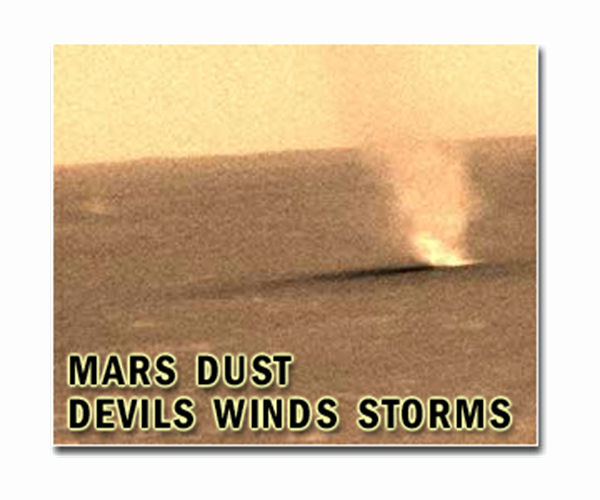Martian dust may endanger astronaut health during surface missions
by Clarence Oxford
Los Angeles CA (SPX) Apr 01, 2025
New research involving the University of Colorado Boulder warns that exposure to Martian dust could pose serious health threats to astronauts on future missions. According to the study, prolonged contact with this extraterrestrial dust may result in chronic lung damage, disruptions to thyroid function, and other harmful conditions.
Published in the journal GeoHealth, the study is the first to comprehensively evaluate the chemical composition of Martian dust and assess its potential impacts on human biology. Scientists from disciplines spanning medicine, geology, and aerospace engineering collaborated on the effort.
“This isn’t the most dangerous part about going to Mars,” said lead author Justin Wang, a student at the Keck School of Medicine of USC. “But dust is a solvable problem, and it’s worth putting in the effort to develop Mars-focused technologies for preventing these health problems in the first place.”
Wang, a CU Boulder graduate, pointed out that astronauts during the Apollo missions reported respiratory irritation and eye discomfort due to lunar dust exposure. For example, Apollo 17 astronaut Harrison Schmitt likened the symptoms to hay fever.
Unlike lunar dust, however, the toxicological properties of Martian dust remain less understood. To shed light on this issue, Wang’s team analyzed data from Mars rovers and meteorites. Their investigation revealed a diverse mix of potentially hazardous compounds in Martian regolith, including silicates, iron oxides, trace metals such as arsenic and beryllium, and perchlorates.
Although many of these substances occur only in minute concentrations, the extended surface duration anticipated for Mars missions-typically around 18 months-raises concerns about cumulative exposure. Co-author Brian Hynek, a geologist at CU Boulder’s Laboratory for Atmospheric and Space Physics, noted the persistent nature of Martian dust.
“You’re going to get dust on your spacesuits, and you’re going to have to deal with regular dust storms,” Hynek explained. “We really need to characterize this dust so that we know what the hazards are.”
Hynek emphasized the pervasiveness of dust on Mars, which is blanketed in iron-rich particles that contribute to the planet’s reddish appearance. Intense dust storms frequently occur, sometimes enveloping the entire planet. He estimated that volcanic regions might be topped with dust layers as deep as 10 meters.
Wang’s academic trajectory has uniquely positioned him to study Martian dust. After earning dual undergraduate degrees in astronomy and molecular biology from CU Boulder, he completed a master’s in aerospace engineering sciences before entering medical school. He currently serves in the Navy through the Health Professions Scholarship Program.
The minute size of Martian dust grains compounds the health risk. At roughly 3 micrometers in diameter, they are small enough to evade the lungs’ natural defense mechanisms and infiltrate the bloodstream.
“That’s smaller than what the mucus in our lungs can expel,” Wang said. “So after we inhale Martian dust, a lot of it could remain in our lungs and be absorbed into our blood stream.”
To assess potential toxicity, Wang and fellow USC medical students reviewed a broad array of literature on the known effects of the compounds found in Martian dust. Their findings connected several components to serious health conditions.
For example, silica-abundant in both Earth and Mars minerals-can lead to silicosis when inhaled, a condition marked by scarring of lung tissue and respiratory distress, similar to ailments seen in coal miners. No current treatment can reverse this disease.
The study also flagged perchlorates as particularly dangerous. These chlorine-based oxidizers, while rare on Earth, are prevalent on Mars and may disrupt thyroid function, possibly resulting in anemia. Even minimal exposure, just a few milligrams, could present a health hazard.
To mitigate such threats, Wang suggested preemptive measures. Iodine supplements might bolster thyroid resilience, though overdosing on iodine carries its own risks. Additionally, filtration systems tailored to Martian dust characteristics could be vital in maintaining breathable air inside habitats.
“Prevention is key. We tell everyone to go see their primary care provider to check your cholesterol before it gives you a heart attack,” Wang said. “The best thing we can do on Mars is make sure the astronauts aren’t exposed to dust in the first place.”
Research Report:Potential Health Impacts, Treatments, and Countermeasures of Martian Dust on Future Human Space Exploration
Related Links
University of Colorado at Boulder
Mars News and Information at MarsDaily.com
Lunar Dreams and more

